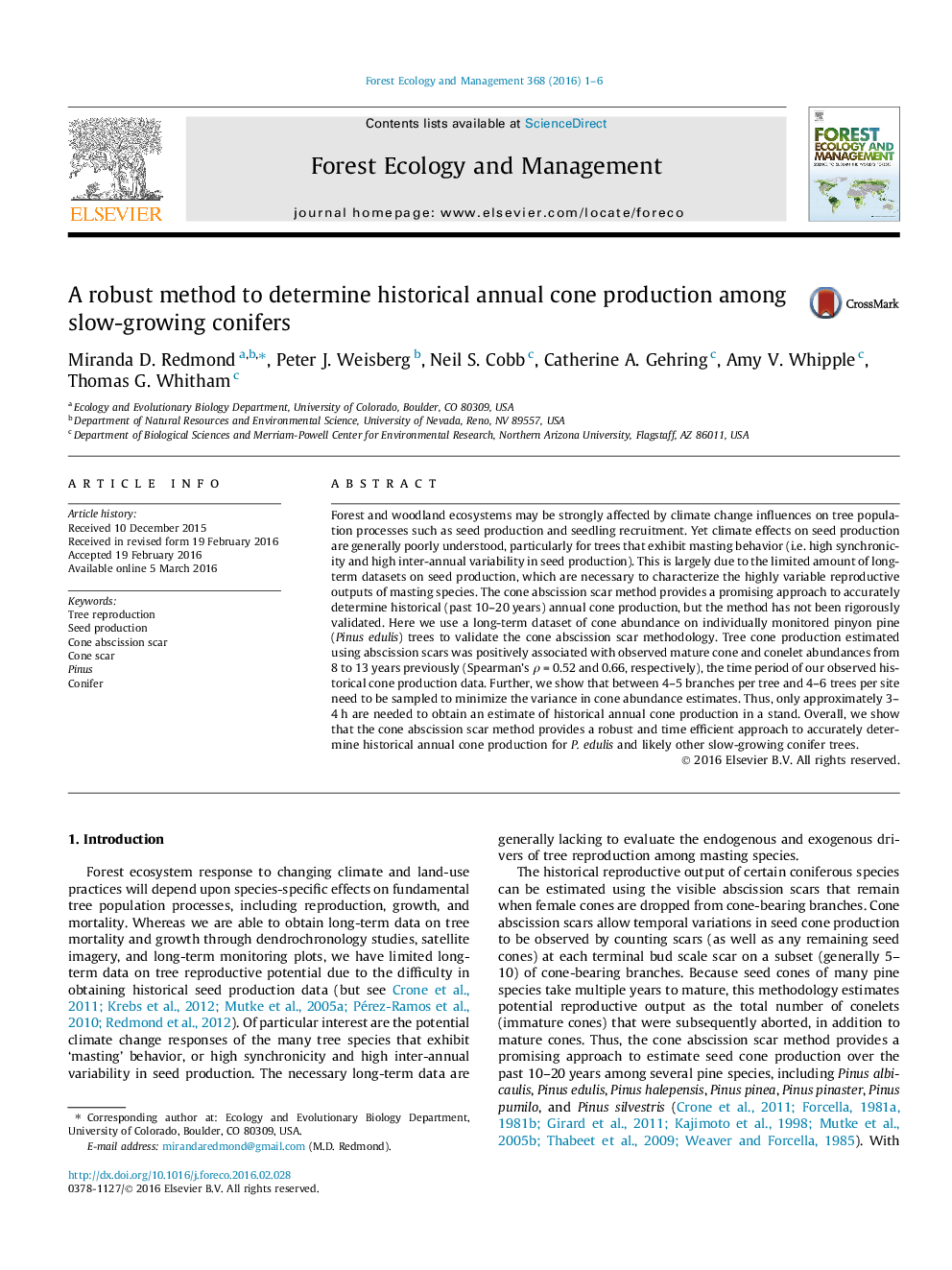| کد مقاله | کد نشریه | سال انتشار | مقاله انگلیسی | نسخه تمام متن |
|---|---|---|---|---|
| 85944 | 159153 | 2016 | 6 صفحه PDF | دانلود رایگان |
• We assessed whether cone abscission scars reflect historical annual cone production.
• We compared cone scar estimates with observed historical (8–13 years prior) cone data.
• Cone scars were strongly correlated with observed cone abundances.
• Minimal sampling effort was required: 4–5 branches per tree and 4–6 trees per site.
• Cone scars are an accurate and time-efficient way to reconstruct historic cone production.
Forest and woodland ecosystems may be strongly affected by climate change influences on tree population processes such as seed production and seedling recruitment. Yet climate effects on seed production are generally poorly understood, particularly for trees that exhibit masting behavior (i.e. high synchronicity and high inter-annual variability in seed production). This is largely due to the limited amount of long-term datasets on seed production, which are necessary to characterize the highly variable reproductive outputs of masting species. The cone abscission scar method provides a promising approach to accurately determine historical (past 10–20 years) annual cone production, but the method has not been rigorously validated. Here we use a long-term dataset of cone abundance on individually monitored pinyon pine (Pinus edulis) trees to validate the cone abscission scar methodology. Tree cone production estimated using abscission scars was positively associated with observed mature cone and conelet abundances from 8 to 13 years previously (Spearman’s ρ = 0.52 and 0.66, respectively), the time period of our observed historical cone production data. Further, we show that between 4–5 branches per tree and 4–6 trees per site need to be sampled to minimize the variance in cone abundance estimates. Thus, only approximately 3–4 h are needed to obtain an estimate of historical annual cone production in a stand. Overall, we show that the cone abscission scar method provides a robust and time efficient approach to accurately determine historical annual cone production for P. edulis and likely other slow-growing conifer trees.
Journal: Forest Ecology and Management - Volume 368, 15 May 2016, Pages 1–6
